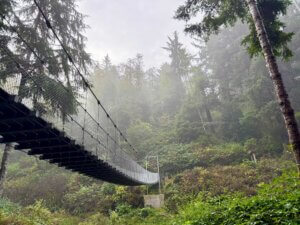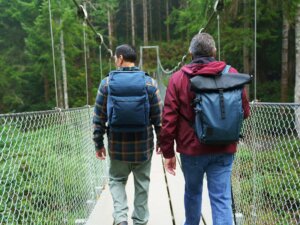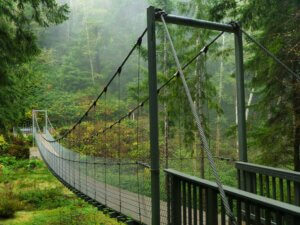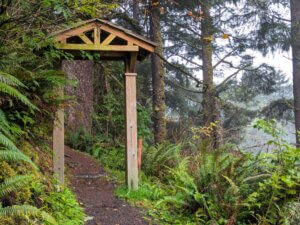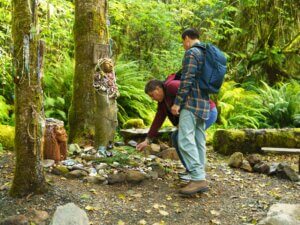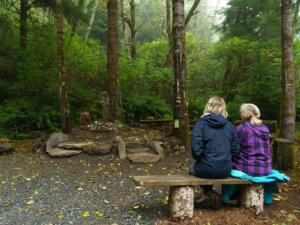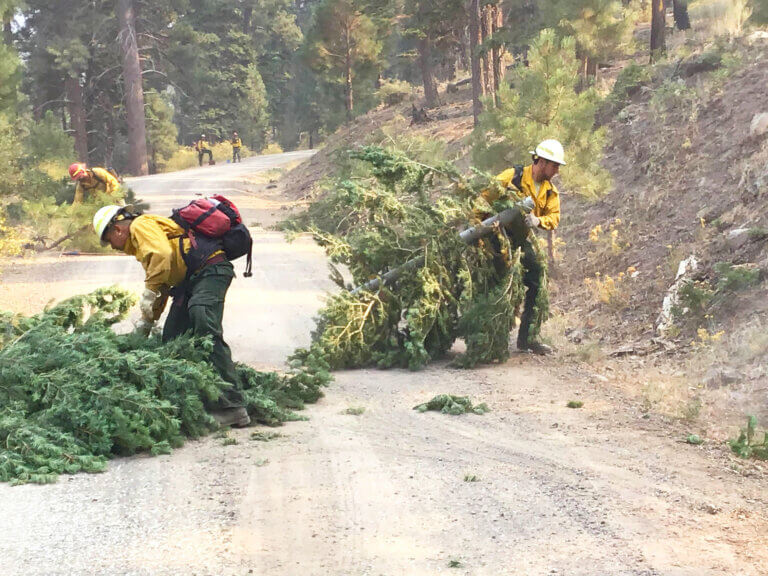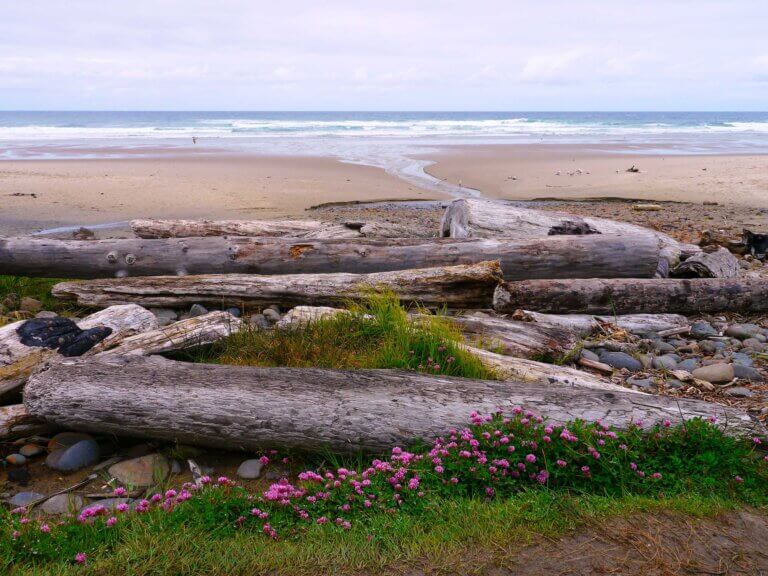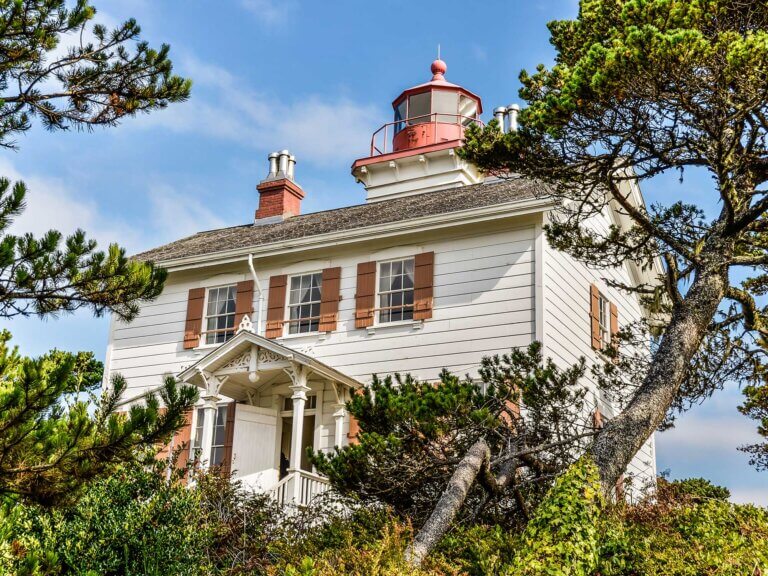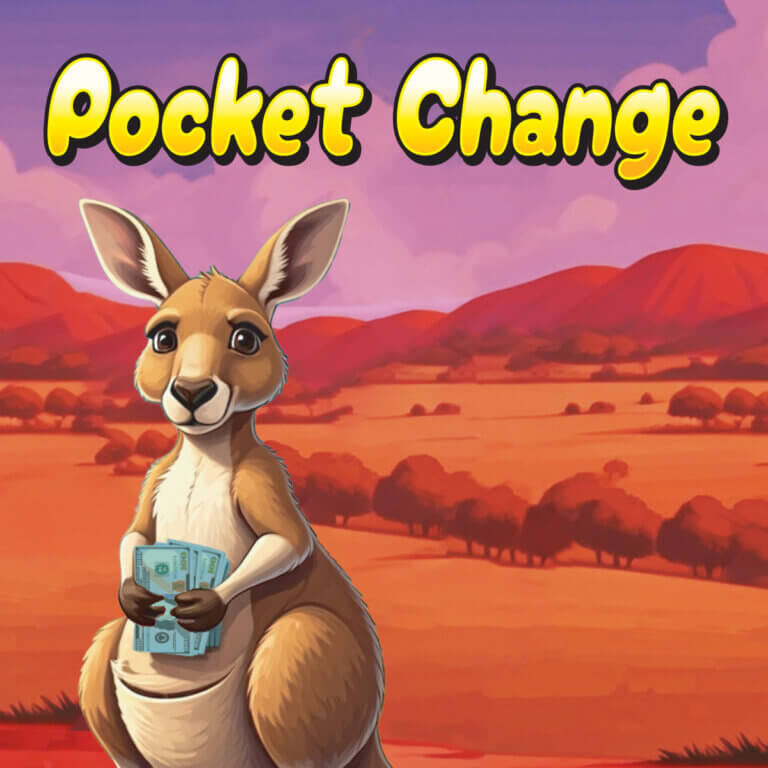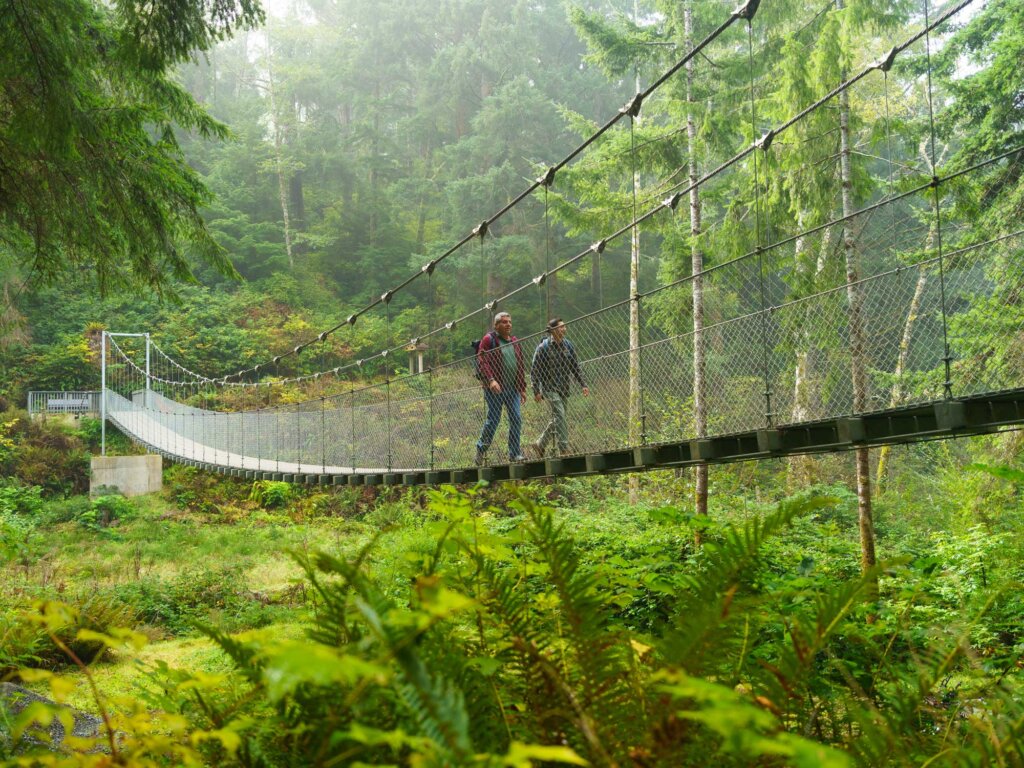
Rebuilding a Bridge/Strengthening Connections
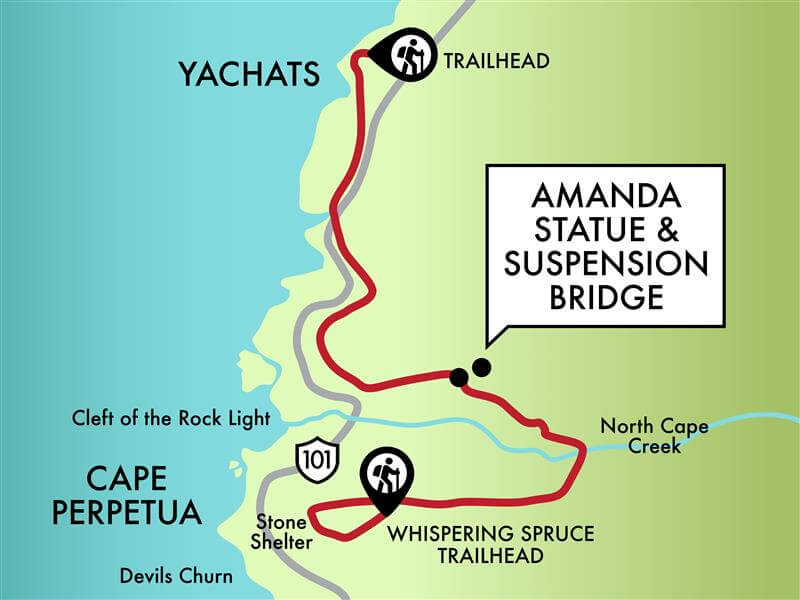
A key bridge along Amanda’s Trail was in need of replacement after years of coastal storms and heavy use. With the help of community partners and Lottery-funded support from Oregon Parks & Recreation (OPRD), the 142-foot-long suspension bridge over Amanda’s Creek has been rebuilt — restoring a safe passage for hikers and preserving a vital link in the trail.
But the new bridge is more than just infrastructure; it is a symbol of renewal and respect for the history the trail carries.
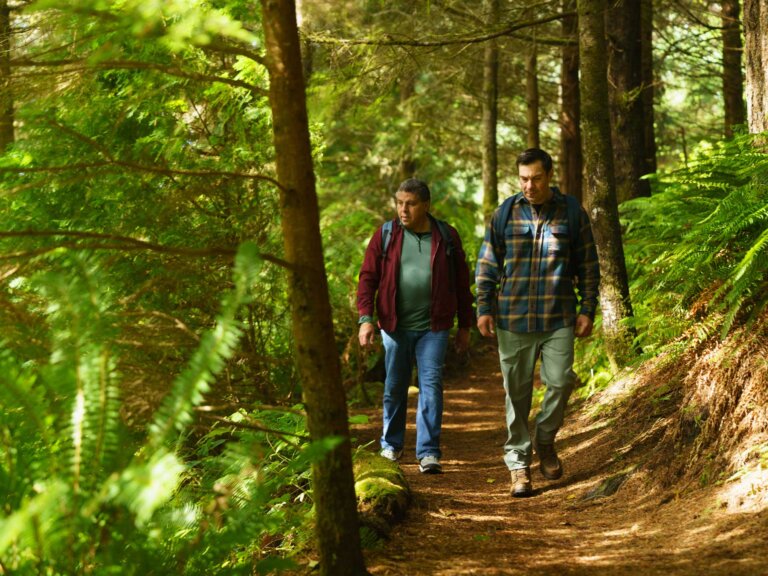
Amanda’s Trail: Cape Perpetua to Yachats
Amanda’s Trail winds through lush coastal forest and along breathtaking headlands near Yachats, Oregon. Hikers enjoy sweeping views of the Pacific, wildflowers in spring, and peaceful stands of evergreens year-round. But beyond its beauty, the trail carries a story of resilience and remembrance.
Today, Amanda’s Trail is a single section of the Oregon Coast Trail, a 400-mile through hike stretching from the California border to the Columbia River. But in the mid-1800s, it was Oregon’s coastal Trail of Tears, a route native people (including Amanda) endured when they were forcibly relocated from the southern coast to the Alsea Subagency in Yachats.
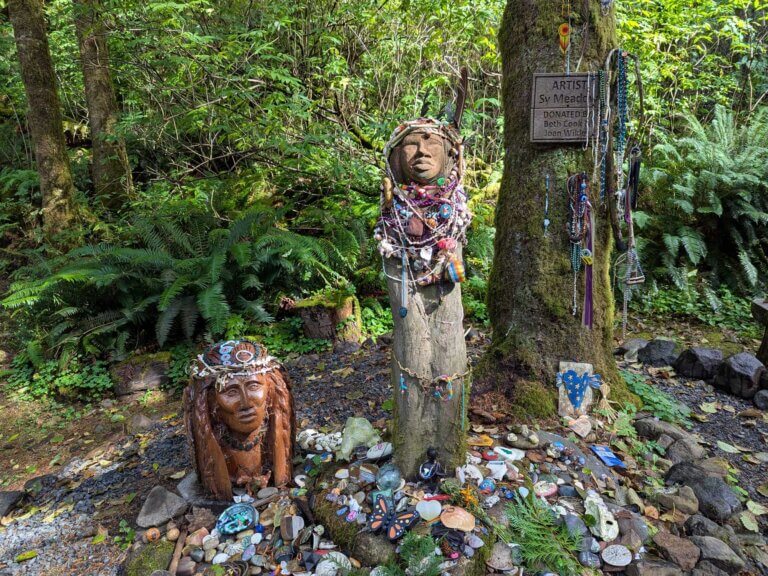
Remembering Oregon’s Trails of Tears
The trail is named for Amanda, a blind Coos woman who, in 1864, was forced to march north with other Indigenous people to the Alsea Subagency in present-day Yachats. Her story represents one of Oregon’s own Trails of Tears (tragically there were several), painful chapters in which entire communities were displaced from their homelands.
The “Amanda Statue” centers a rustic amphitheater alongside the new bridge. Hikers leave cedar sprigs and other offerings there as a show of respect. This special feature of Amanda’s Trail is a quiet place to contemplate one woman’s courage and the endurance of Native peoples.
Resilience and Remembrance
Honoring Indigenous Heritage
Peaceful Resolutions
Amanda’s Trail is part of an ongoing effort to acknowledge Oregon’s Indigenous history. Interpretive signs along the route invite hikers to learn about Amanda’s life and the broader story of forced removal in the 1800s. Visitors are encouraged to walk the trail with respect and remembrance, honoring the heritage of the Confederated Tribes of the Siletz Indians, the Coquille Indian Tribe, and the Confederated Tribes of the Coos, Lower Umpqua, and Siuslaw whose histories are tied to this land.
Since the late 1990s, the Yachats community has marked each New Year with a Peace Hike along the trail. This annual tradition brings together locals, tribal representatives, and visitors to reflect, sing, and offer prayers near Amanda’s statue beside the suspension bridge. It’s a time to honor the past, acknowledge the land’s history, and renew a shared commitment to stewardship and healing in the new year.
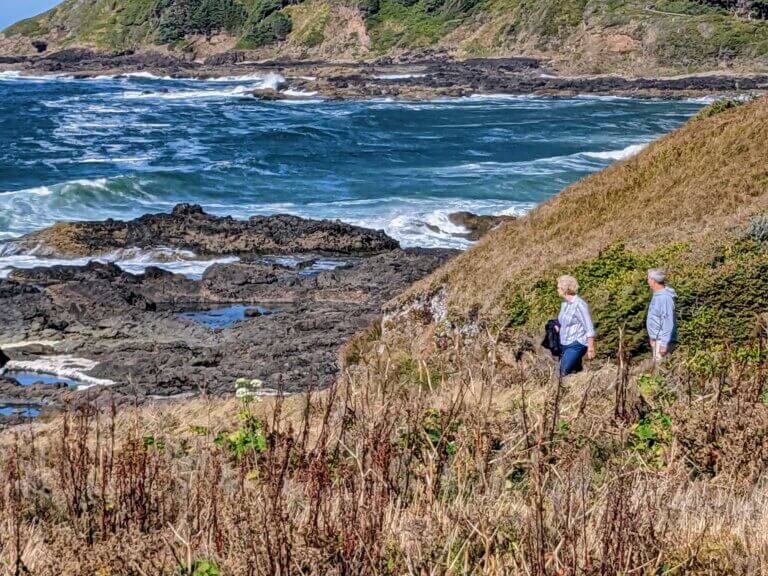
Hike the Coast
The Oregon Coast Trail (including Amanda’s Trail) offers a stunning blend of rugged beauty and peaceful forested paths. If you go, you’ll enjoy sweeping views of the Pacific crashing against basalt cliffs, pass through lush coastal rainforest, and maybe even spot whales offshore. Central Coast highlights include the dramatic Devil’s Churn, the windswept vistas from the Cape Perpetua Scenic Area, and quiet moments under towering spruce and fir trees. The entire trail is packed with natural wonder, and should not be missed!
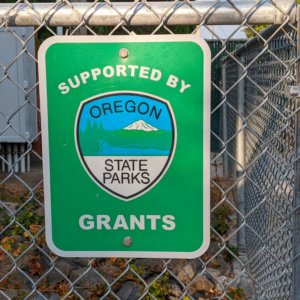 Your Lottery Play Makes a Difference
Your Lottery Play Makes a Difference
The bridge rebuild was made possible thanks to the combined efforts of local trail groups, volunteers, tribal representatives, and community partners. The Oregon Lottery is proud to have contributed $498,000 in funding to this important project through OPRD, helping ensure Amanda’s Trail remains accessible for future generations. Together, we build more than trails—we strengthen the connections between Oregon’s people, history, and important places.
Featured Projects
LOTTERY DOLLARS DOING GOOD THINGS IN YOUR COMMUNITY
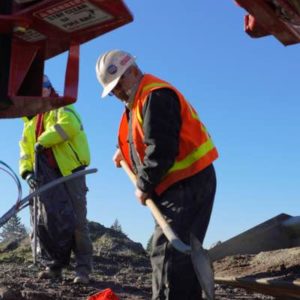
Economic Growth
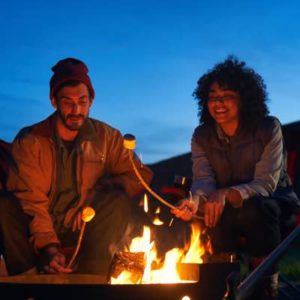
State Parks
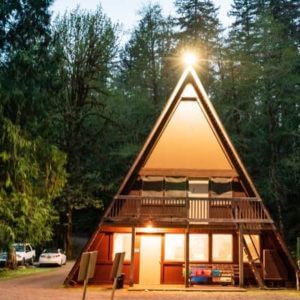
Outdoor School
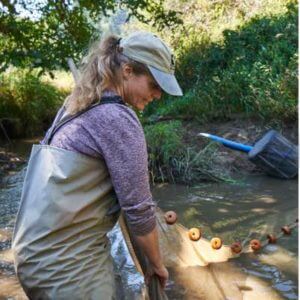
Natural Habitats

Public Schools

